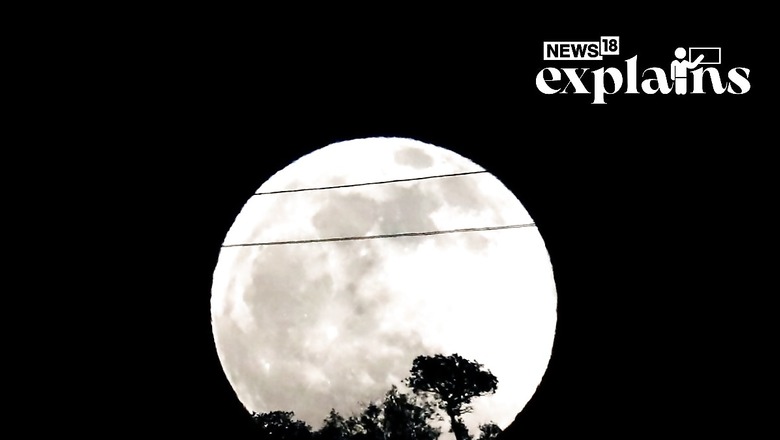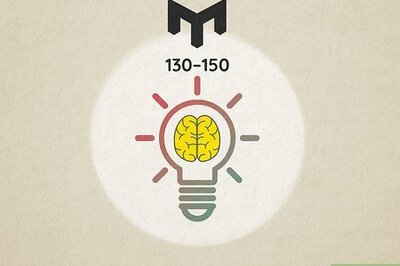
views
The first Lunar Eclipse of the year is scheduled to occur today, May 5th, and those interested in witnessing it will be able to do so from several places across India. The lunar eclipse, also known as Chandra Grahan, will begin at 8:44 p.m. and last until 1:01 a.m. The Penumbral Lunar Eclipse will last 4 hours and 18 minutes in total.
What makes a lunar eclipse occur?
A lunar eclipse occurs when Earth blocks sunlight from reaching the moon, casting a shadow across its surface.
During a lunar eclipse, the sun-blocking Earth creates two shadows on the moon: the umbra, which is a full, dark shadow, and the penumbra, which is a partial outer shade, according to a report by Space.
Lunar eclipses are classified into three categories based on how the sun, Earth, and moon are aligned at the time of the event.
The Earth’s shadow is cast across the entire lunar surface during a total lunar eclipse.
Partial lunar eclipse: During a partial lunar eclipse, only a portion of the moon enters Earth’s shadow, giving the appearance of a “bite” into the lunar surface.
The moon’s shadow will seem dark on the side facing Earth. According to NASA, the amount of “bite” we see depends on how the sun, Earth, and moon align.
The feeble outer half of Earth’s shadow is cast across the lunar surface during a penumbral lunar eclipse. This eclipse is not as spectacular as the other two and can be difficult to see.
Why Does the Moon Turn Red During an Eclipse?
During a lunar eclipse, the same process that causes our skies to be blue and our sunsets to be red causes the Moon to turn red. Rayleigh scattering is the technical term for this phenomenon. Light travels in waves, and the physical properties of different colours of light vary. Blue light has a shorter wavelength than red light and is thus more easily scattered by particles in the Earth’s atmosphere, according to NASA.
Red light, on the other hand, goes through the atmosphere more directly. When the Sun is directly overhead, we see blue light all over the sky. When the Sun sets, however, sunlight must pass through more atmosphere and travel a greater distance before reaching our eyes. The Sun’s blue light scatters, allowing longer-wavelength red, orange, and yellow light to get through.
The Moon turns red during a lunar eclipse because the only sunlight reaching the Moon goes through Earth’s atmosphere. During the eclipse, the more dust or clouds in the Earth’s atmosphere, the redder the Moon will seem. It’s as if the Moon is being projected with all of the world’s sunrises and sunsets.
How to View the Lunar Eclipse?
Penumbral eclipses, unlike complete and partial lunar eclipses, are difficult to view. Because the penumbra is significantly fainter than the very black umbra, distinguishing a penumbral lunar eclipse from a regular full Moon is quite difficult. Only highly observant eyes or well managed images will reveal it, as per a report by Indian Express.
The lunar eclipse should be visible in the southeastern region of the sky from New Delhi. The Moon should be roughly 40 degrees above the horizon at 10.54 PM on May 5, the moment of the greatest eclipse.
Read all the Latest Explainers here




















Comments
0 comment